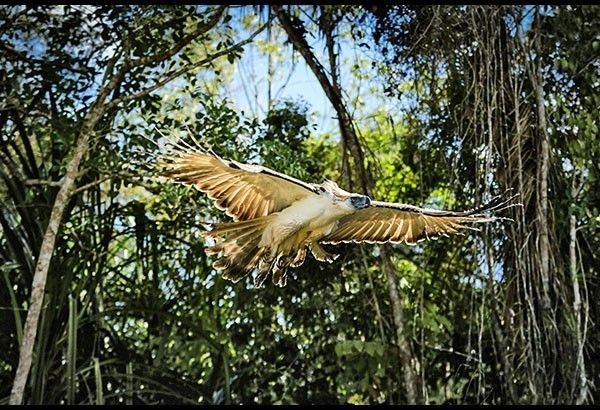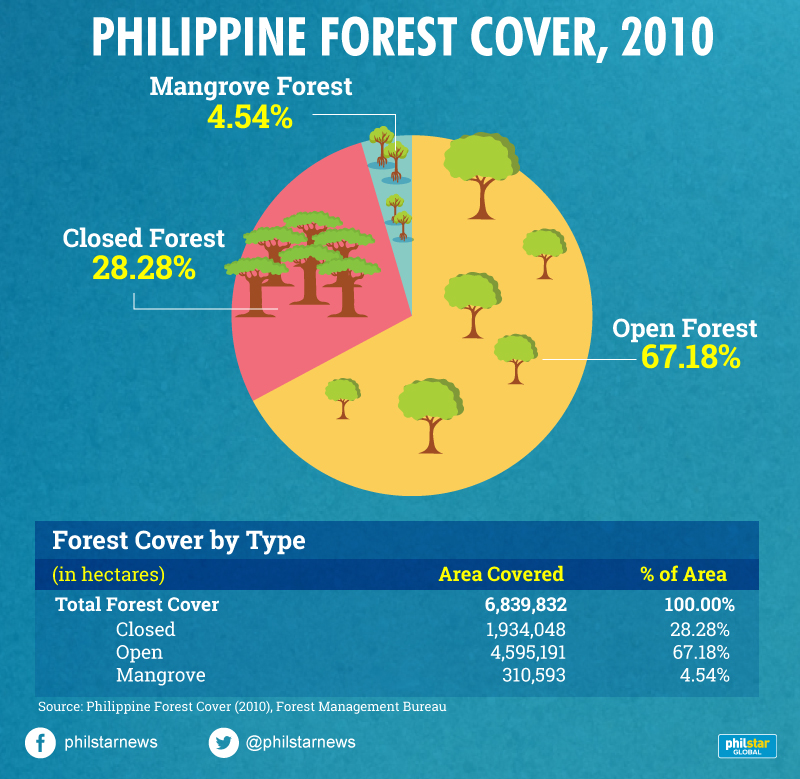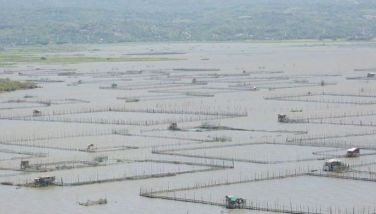New forest management bills have yet to take root in Congress

MANILA, Philippines — Philippine forests are home to thousands of wildlife species, many of which are unique to the country.
But the once lush forests are steadily being depleted, with government experts estimating the Philippines is losing approximately 47,000 hectares of forest cover every year.
According to Philippine Forests at a Glance 2016 published by the Department of the Environment and Natural Resources - Forestry Management Bureau, of the 15.8 million hectares of land classified as forestland, 33.5 percent is established timberland while 10.9 percent are established forest reserves or "permanent forests."
Aside from human activity, the weak enforcement of forestry regulations and the lack of laws with much teeth contribute to the plunder of forest resources, a conservationist group says.
“Our current policies on forestry only address problems of extraction and are not primarily geared towards conservation and sustainable development,” Haribon Foundation told Philstar.com.
“While these regulations prohibit excessive extraction in forests, it does not address the increasing consumer demands for forest resources,” it also said.
For more than two decades, bills on sustainable forest management have been collecting dust at the House of Representatives and at the Senate.
Haribon stressed that the plurality of forest bills in Congress reflects the competing interests of different groups pushing for them.
“It has already been over two decades since the initiative to update the country’s forest policies began but it is consistently hindered by these conflicting interests by various sectors,” it said.
READ: Recovering the Philippines' forest cover

‘Revitalized’ Forest Bill
Rep. Teddy Baguilat (Ifugao) and Rep. Arthur Defensor (Iloilo, 3rd district) re-filed the Forest Resources Bill in the House of Representatives last year.
One of the main provisions of the bill is its emphasis on the use of a functional forest definition.
It uses the definition of forest that is “an ecosystem, wherein trees are the dominant life form, as a community of plants and animals interacting with one another and its physical environment and consisting of trees with overlapping crown of 60 to 100-percent forest cover.”
Advocates argue that the definition used by the Department of Environment and Natural Resources is questionable, noting that it hides the real rate of deforestation in the country.
The Forest Management Bureau defines forests as “land with an area of more than 0.5 hectare and tree crown cover (or equivalent stocking level) of more than 10 percent” but does not mention plants and animals.
The Forest Resources Bill also emphasizes the need to protect the country’s remaining natural forests.
“The country needs at least 40 percent forest cover to sustain its ecological processes but we are down to merely 24 percent—posing an urgent call to bring back Philippine forests,” Haribon said.
A technical working group was formed in January 2018. The TWG, which is a specialized group formed by a committee handling a bill, regularly meets on the consolidated bill, which will be presented to the House Committee on Natural Resources.
Congress is on recess until May 15.
READ: Timeline: Logging bans from Cory to Rody
‘Green’ bills fail to flourish in Congress
Haribon also urged the passage of other “green” bills such as the National Land Use Act and the Alternative Minerals Management Bill.
“These bills acknowledge that forests are linked with biodiversity, food security, livelihoods and survival and therefore should be protected,” the group said. “[The bills] provide provisions on the prohibition of destructive and extractive developments in forestlands to protect the country’s ecological system.”
Last year, President Rodrigo Duterte urged Congress to pass NLUA to “ensure the rationale of sustainable use of our land.”
The measure seeks to determine the proper use of land all over the Philippines by creating the National Land Use Policy Council.
It is also seen as a hope to put an end to the current degradation of the country’s resources.
The House approved House Bill 5240, or the proposed “National Land Use and Management Act of the Philippines”, on third and final reading in July 2017. Its Senate version is still pending at the committee level.
If Congress fails to pass it before the 2019 elections, the bill will need to be re-filed and go through the legislative process again.
The Alternative Minerals Management Bill, on the other hand, meant to replace what Haribon considers a flawed Mining Act of 1995.
Some of the salient points of the measure are restricting mineral extraction to Filipino-owned corporations, protecting small island ecosystems from mining, and increasing the excise tax on minerals.
Days before delivering his second State of the Nation Address in July 2017, Duterte announced that he supports the enactment of a new mining law.
Different versions of the AMMB have been filed in the two chambers.
- Latest
- Trending



























